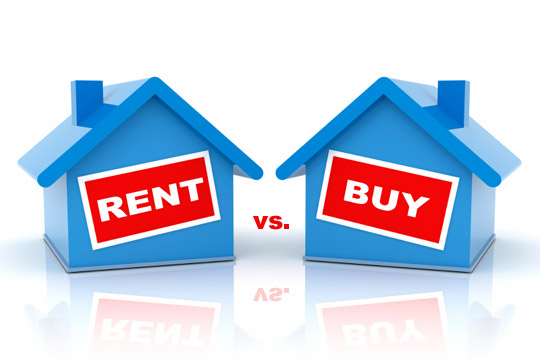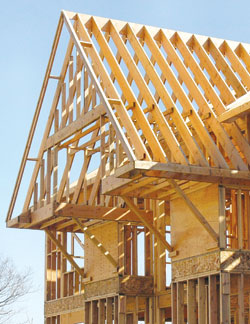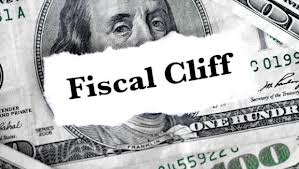Archive
Housing Starts Bode Well For US Economy
The highest number of single family homes were started in December, 2014 in almost seven years; this fueled an unexpectedly large gain in U.S. housing starts that signals construction will contribute more to economic growth in 2015.
Housing starts climbed 4.4 percent to a 1.09 million pace; this rate is for total housing starts, including apartments. Work began on 728,000 houses at an annual rate, a 7.2 percent increase from November and the most since March 2008, a Commerce Department report showed Wednesday in Washington.
This improvement in single-family construction signals the industry is beginning to focus on the biggest part of the market, perhaps encouraged by gains in employment and consumer confidence that make Americans more likely to marry and have children. Historically, factors such as low borrowing costs and more access to credit would raise the odds that a household will decide to buy a property rather than rent.
“The strength is where you’d like to see it, in single-family housing,” said Brian Jones, a senior U.S. economist at Societe Generale in New York, who predicted forecast starts would rise to 1.07 million. “It bodes well for residential real estate. It’s another thing going in the right direction for the economy.” Single-family projects in 2014 made up the smallest share of total housing starts since 1985.
Survey Results
The median forecast of 82 economists surveyed by Bloomberg projected total housing starts would rise to a 1.04 million pace in December. Estimates ranged from 950,000 to 1.1 million. The November reading was revised up to a 1.04 million rate from a previously reported 1.03 million.
Permits (NHSPATOT), a proxy for future construction, declined 1.9 percent in December to a 1.03 million pace. They were depressed by a setback in multifamily projects, which can be volatile from month to month. Applications for single-family homes increased to a seven-year high.
Builders began work on 1.01 million homes in 2014, the most since 2007. The construction boom peaked at a three-decade high of 2.07 million in 2005, before plunging to a record-low 554,000 in 2009.
The rebound in residential real-estate since the recession has been mainly driven by gains in multifamily projects, including apartment buildings, as Americans soured on homeownership and opted to rent instead. A more solid recovery in construction of single-family homes would signal the industry is on sounder footing.
The Re-entrance of Millennials Buying Real Estate

The housing market continued to stabilize, even as 2014 rounded out and as leases came due for the next year’s renewal, Zillow predicted that the under-35 set will be running the real estate buying show this year.
Dr. Stan Humphries, Zillow Chief Economist, explained: “Roughly 42 percent of Millennials say they want to buy a home in the next one to five years, compared to just 31 percent of Generation X, and by the end of 2015 Millennials will become the largest home-buying age group. The lack of home-buying activity from Millennials thus far is decidedly not because this generation isn’t interested in homeownership, but instead because younger Americans have been delaying getting married and having children, two key drivers in the decision to buy that first home. As this generation matures, they will become a home-buying force to be reckoned with.”
Realtor.com agrees with this assessment, as their 2015 Housing Forecast shows:
“Households headed by Millennials will see significant growth as a reflection of economic gains. Millennials will also drive two-thirds of household formations over the next five years. Next year’s addition of 2.75 million jobs and increased household formation will be the two key factors driving first-time buyer sales.”
Looking to Buy a House in 2015?
Whether you are in the under-35 Millennial set or just looking to move in 2015, the stable housing market coupled with the increase in potential home buyers means that home prices will continue to rise. If the predictions come to pass, it will become a seller’s market during the course of the year, as supply and demand converge.
If you are getting your house ready to sell, take some time to meet with your local mortgage banker and get pre-approved. You will need to know the facts about how much house you will qualify for based the projected sales price of your current home. Also, meet with a local real estate agent and get the nitty gritty on your neighborhood for home sales and the region you intend to move. We can connect you with great agents – contact us today!
Use the winter weather as an excuse to assess if your home could use a little TLC before you put it on the market – focus on the kitchen, bathrooms and conditions of your walls first and foremost. With a little preemptive effort on your part now, you can sell quickly and move on your dream home early in the year before the feeding frenzy begins in earnest.
Time to Fall into Buying a Home?
As we head into fall, families are getting back into the routine of school, projects and after school activities. Fall is also considered to be the “off-season” to buy a home. Spring and summer rule this trend, but there are several reasons why if you are in the market to buy a home in the near future, as the weather cools, buying now makes sense.
Increasing Mortgage Rates
While the reports are conflicting depending on your source, interest rates for 30-year fixed-rate mortgages are predicted to begin to rise as 2014 comes to a close. It is assumed that an increase of a full-percentage could be expected by the end of 2015.
Your monthly mortgage payment is directly impacted by the mortgage rates available. Waiting to begin the process only increases your chances of a higher interest rate, and a higher mortgage payment.
Rising Home Prices
With the continued stabilization of the housing market comes the potential for higher home prices. At present, we are looking at a seller’s market, where chances of getting a good dollar for a home for sale are much more possible than previous years. The Home Price Expectation Survey, which polls some of the most distinguished economists and strategists in the industry, projects an increase in home values over the next five years between 11.2% and 27.8%.
Simply put, that $100,000 property could be going for $125,000 in the next few years. Do you want to add $25,000 to your mortgage payments just for waiting?
What Better Time than the Present?
Considering the two criteria that make up the cost of a home, the mortgage rate and the price of the home, are both looking to increase in the near future for an undetermined length of time, the fact is, the longer you wait to begin looking for a home the more costly it is going to be for you.
You want the best home your budget can afford, for you and your family. At the very least, now is the time to speak to a local real estate agent and mortgage banker, to find out the costs of homes in your area and the mortgage rates available to you. Get the information you need to put your strategy to buy a new home in motion today.
Builder Confidence – Highest Level Since November, 2005
A latest four-point gain brings the National Association of Home Builders/Wells Fargo Housing Market Index (HMI) index released today to its highest reading since November, 2005. Builder confidence in the market for newly built, single-family homes rose for a fourth consecutive month in September to a level of 59 on the HMI index.
“Since early summer, builders in many markets across the nation have been reporting that buyer interest and traffic have picked up, which is a positive sign that the housing market is moving in the right direction,” said NAHB Chairman Kevin Kelly, a home builder and developer from Wilmington, Delaware.
“While a firming job market is helping to unleash pent-up demand for new homes and contributing to a gradual, upward trend in builder confidence, we are still not seeing much activity from first-time homebuyers,” said NAHB Chief Economist David Crowe. “Other factors impeding the pace of the housing recovery include persistently tight credit conditions for consumers and rising costs for materials, lots and labor.”
Derived from a monthly survey that NAHB has been conducting for 30 years, the NAHB/Wells Fargo Housing Market Index gauges builder perceptions of current single-family home sales and sales expectations for the next six months as “good,” “fair” or “poor.” The survey also asks builders to rate traffic of prospective buyers as “high to very high,” “average” or “low to very low.”
Scores from each component are then used to calculate a seasonally adjusted index where any number over 50 indicates that more builders view conditions as good than poor.
All three HMI components posted gains in September. The indices gauging current sales conditions and traffic of prospective buyers each rose five points to 63 and 47, respectively. The index gauging expectations for future sales increased two points to 67.
Builder confidence also rose across every region of the country in September. Looking at the three-month moving average for each region, the Midwest registered a five-point gain to 59, the South posted a four-point increase to 56, the Northeast recorded a three-point gain to 41 and the West posted a two-point increase to 58.
Where’s the Housing Market Headed?
Despite the spring buying season being in full bloom and mortgage rates at lows not seen in almost a year, mortgage application volume barely budged last week. The Mortgage Bankers Association reported that its Market Composite Index, a measure of total loan application volume, rose by 0.9% in the latest week, while the refinance index increased 4%. The purchase index fell by 3%.
Zillow reported today that the national negative equity rate fell to 18.8% in the first quarter of 2014, meaning more is owed on the home than it is currently worth. In Q4 of 2013, negative equity stood at 19.4%. Zillow said that negative equity tends to limit inventory, which pushes home values higher, which in turn makes those homes that are available, that much less affordable.
Government controlled mortgage finance giant Fannie Mae said today that it has cut its outlook for home sales in 2014, as well as 2015. The move comes after markets for new and existing homes experienced weakness in the first quarter. Fannie is now forecasting that existing home sales will hit 4.98 million this year, down from the 5.04 million originally projected. Single family homes are forecasted to see sales of 476,000 this year, down from 494,000.
Abundance of Economic Data
Economic data was abundant today and the members of the Federal Reserve closely scrutinized the numbers as the Federal Open Market Committee meeting gets underway today on Capitol Hill. The members will discuss the U.S. economy and will most likely hold off on tapering its current Quantitative Easing Program dubbed QE III.
Retail Sales fell in September for the first time in six months, but the decline could be attributed to a decline in auto sales. Sales fell by 0.1% and were inline with estimates but when stripping out autos, sales actually rose by 0.4%, double the 0.2% expected. The Commerce Department said there were fewer weekend shopping days in September coupled with a short supply of some popular models.
Over in housing, the Case Shiller 20-city Index year-over-year rose by 12.8% in August, above the 12.4% expected and above the 12.3% recorded in July; it was the fastest year-over-year gain since February 2006. However, prices gains are beginning to slow in many cities, a signal that the big gains may have peaked. The Conference Board reported that Consumer Confidence in October slowed as the effects of the government shutdown and debt ceiling issues took hold of the economy. The Index fell to 71.2 in October, below the 73.1 expected and down from the 80.2 recorded in September. A spokesperson for the Conference Board said, “Confidence is likely to remain volatile for the next several months.”
Rent vs Buy? Pursuing Home Ownership
 Buying a home vs. renting is a big decision that takes careful consideration, as most mortgage consultants will agree. But the rewards of home ownership are great. For many years, purchasing real estate has been considered an extremely profitable investment. It is an achievement that offers a sense of pride, financial stability and potential tax advantages.
Buying a home vs. renting is a big decision that takes careful consideration, as most mortgage consultants will agree. But the rewards of home ownership are great. For many years, purchasing real estate has been considered an extremely profitable investment. It is an achievement that offers a sense of pride, financial stability and potential tax advantages.
Yes, there are certain responsibilities associated with owning a home. Landlords will often argue the benefits of renting, and for obvious reason. If you are renting, you’re helping them make their mortgage payment.
The numbers are staggering if you look at it this way. If you are paying $1,000 per month for an apartment, and you know your rent will increase 5% every year, then over the next five years you will pay your landlord $66,309. If you are currently renting a house, you may be paying much more than that each month. Either way, you gain no equity by shelling out this monthly housing expense and you certainly won’t benefit when the property value goes up!
However, if you were to purchase your own home or condominium, you would be on your way toward building equity. By choosing a fixed-rate loan program, you can have the comfort of knowing your monthly mortgage payment will never go up. In fact, you would have the option of refinancing to a lower interest rate at some point in the future should interest rates drop lower than the rate you’d currently be locked in at, and this would cause your monthly mortgage commitment to go down.
Not only would your own home give you added space, your own back yard and overall privacy—home ownership would also give you some tax advantages. Depending on your tax bracket, owning a home is often less expensive than renting after taxes. Interest payments on a mortgage below $1 million are tax-deductible. Your mortgage consultant should help you evaluate the tax advantages of various loan scenarios. Share this information with your tax consultant to glean feedback and recommendations.
To find the loan program that is right for you, your mortgage consultant will need to evaluate your monthly household income, current assets and savings, as well as any monthly obligations you may have for credit card payments, car payments, child support, etc. These pre-qualification factors, along with the report of your credit score, will determine how much house you can afford and what interest rate you will pay for financing. It is also important to let your mortgage consultant know what your future goals are, because this will help narrow down which loan option is the best fit for your long-term needs.
There are many different types of loan programs available, including “low”down payment mortgage programs. The most common and beneficial loan for people buying their first home is the FHA loan, which only requires a 3.5%down payment. In addition, FHA allows a seller to cover up to 6% of a buyer’s closing costs which really helps decrease the amount of money it takes to buy a home. Many people also don’t know that FHA allows the lowest credit scores of any loan available today, only needing a 640 score in most cases.
If there is any time to buy it is NOW! Why? Because home prices are on the rise; don’t miss this opportunity to take advantage of the current market and low interest rates.
The Fiscal Cliff: The Basics
It’s safe to say that by this point, we’re all aware of the fiscal cliff and its status as the elephant in the room. Everyone knows some sort of decision has to be made by the first of the year and it affects every taxpayer. As for the specifics, however, a sizable chunk of the population only has a vague idea, and often the media outlets reporting on the decision-making progress don’t go into detail.
The fiscal cliff’s roots go back to the Bush era, during which time tax cuts were implemented across a variety of areas. Back in 2011, in an effort not to stifle economic growth, the Obama administration extended the cuts until January 1, 2013. The United States’ current economic and fiscal climate, however, is making for an extremely difficult situation: growth is still feeble enough that levying the originally planned taxes would likely do serious damage, but further extending the cuts would exacerbate the already massive deficit.
Needless to say, both the economy and the deficit are politically charged issues, which is why Congress is cutting it so close to the January 1st deadline. Partisanship and negotiations aside, the options boil down to going ahead with the policy as it’s currently laid out, cancelling the scheduled tax increases and spending cuts, or compromising in such a way that doesn’t address the budget issue as comprehensively but that would negatively impact growth less. It’s a very delicate balance complicated by a colossal number of variables, which is why Congress has been putting off the decision for about three years.
If the tax increases and spending cuts go into effect as originally planned, analysts predict that GDP would decline by 4%, officially landing the U.S. back into a recession, and that unemployment would increase by nearly 1%. Consumption spending, which is particularly important when it comes to sustaining growth, would likely take a hit of around $1 trillion. On the other hand, the deficit as a percentage of GDP would be reduced by half, which, given the budget trends, would be a welcome change indeed.
If you have any questions about the fiscal cliff and how it may impact your home loan situation, please don’t hesitate to contact me
Market Update – August 27, 2013 – Stock Prices Lower
The tensions in Syria are pushing Stock prices lower today and is shifting investing dollars over into the Bonds markets. U.S. allies are readying plans for an air strike against the nation after 100,000 people have died and 1 million children have become refugees.
Over in the housing sector, the Case Shiller Home Price 20-city Index rose by 12.1% in the year ended in June, just below the 12.2% registered in May. From May to June there was a 2.2% increase, but that is down from the 2.5% recorded from April to May. The report signals that the housing recovery continues, but at a slower pace.
Consumers remained optimistic in August despite the growing debt ceiling woes and as the fed readies to ease back on stimulating the U.S. economy. The Conference Board reported this morning that the Consumer Confidence Index rose to 81.5 in August from the 81.0 recorded in July. A spokesperson for the Conference Board said consumers were moderately more upbeat about business, job and earnings prospects






